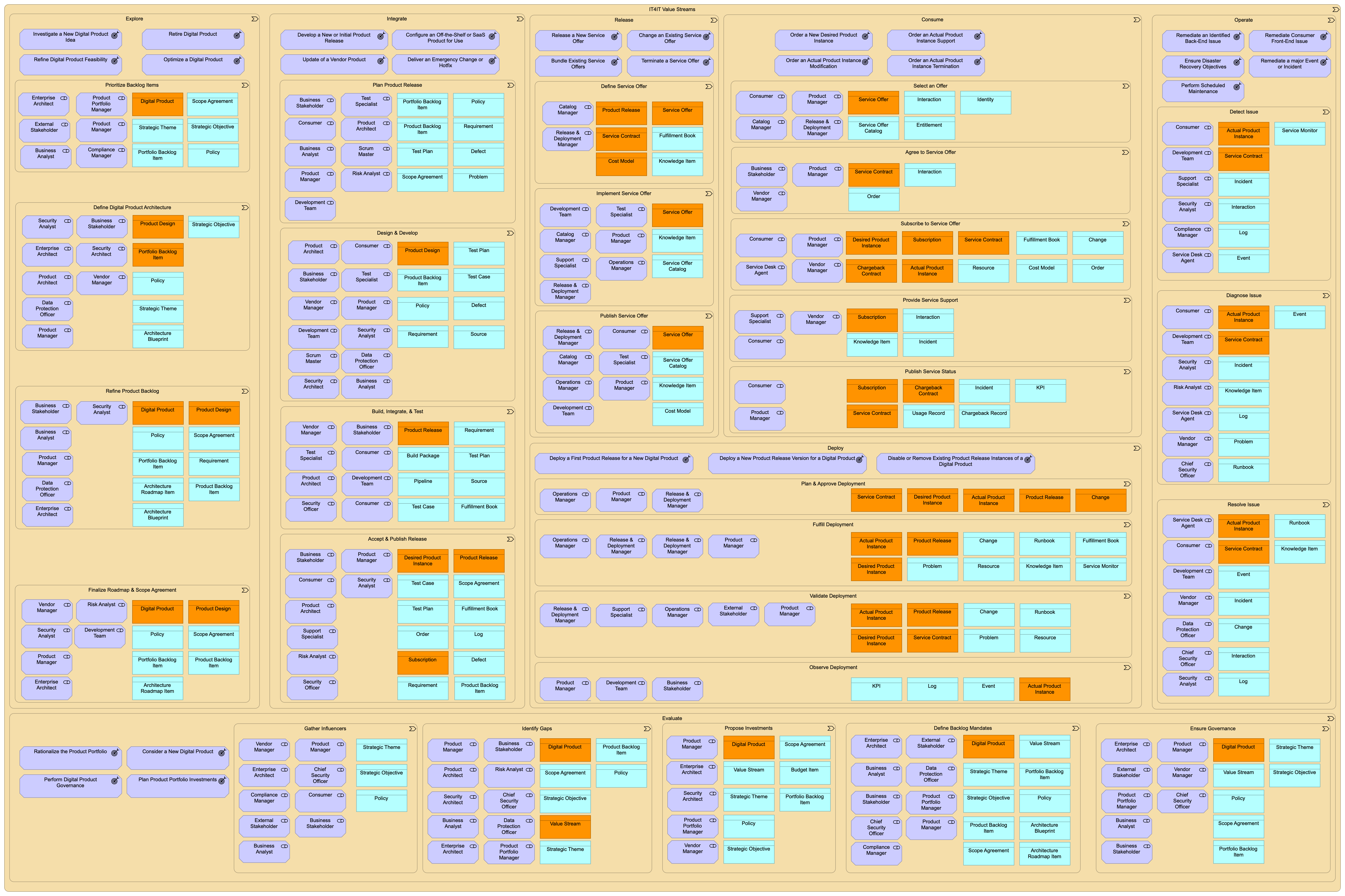Concepts at Level 2: Value Stream Documentation
The value stream concept is introduced at Level 1, but is defined in detail at Level 2. In order to define value streams, the following concepts are introduced:
-
Scenarios
-
Value stream stages
-
Stakeholders
Further, the normative definition of the IT4IT Value Streams refers to data objects, which are introduced and defined at Level 1.
Value Stream
In the normative definition of value streams, scenarios are defined for which the value stream is executed. This is complemented by defining the activities that are expected to happen as part of implementing the value stream; documented as value stream stages.
Note that the value stream stages of an IT4IT Value Stream are not considered to be a sequence of activities; value streams are abstract, and not a process description.
Scenario
A scenario defines a situation in which a given value stream should be triggered to add value to the overall Value Network.
The ArchiMate solution pattern for this is an “Outcome” motivational element.
Value Stream Stage
A value stream stage is a refinement of the value stream, and uses the same ArchiMate solution pattern: a Value Stream data object.
A value stream stage is defined in terms of
-
Entry and exit criteria
-
Main activities
-
Examples of participating stakeholders
-
Participating data objects and containing functions
Stakeholder
A stakeholder is a persona or role that an organization is expected to engage in a given value stream stage.
| The IT4IT Standard does not define the needed stakeholders, but merely proposes possible stakeholders to engage. Stakeholders must be refined when the reference architecture is used to derive a concrete implementation architecture at Level 5. |
The ArchiMate solution pattern for this is a “Business Stakeholder” motivational element.
This leads to the ArchiMate structure of the seven IT4IT Value Streams in IT4IT Value Streams, Scenarios, Stages, Stakeholders, and Data Objects. For more detail, see the definitions in IT4IT Value Streams.
